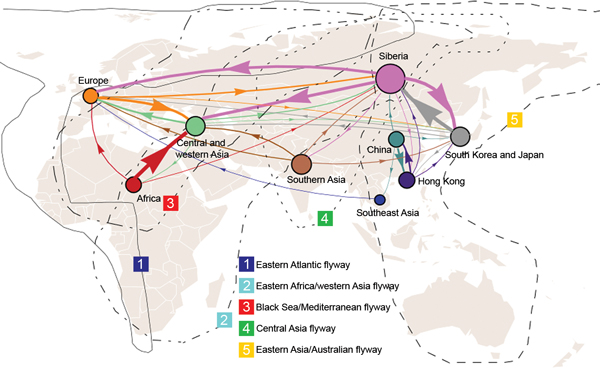Volume 20, Number 8—August 2014
Research
Global and Local Persistence of Influenza A(H5N1) Virus
Figure 1

Figure 1. Global migration patterns of highly pathogenic avian influenza A(H5N1) viruses estimated from sequence data sampled during 1996–2012Arrows represent direction of movement, and arrow width is proportional to the migration rateMigration rates <0.07 migration events per lineage per year are not shownThe area of each circle is proportional to the region’s eigenvector centrality; larger circles indicate crucial nodes in the migration network.
Page created: July 18, 2014
Page updated: July 18, 2014
Page reviewed: July 18, 2014
The conclusions, findings, and opinions expressed by authors contributing to this journal do not necessarily reflect the official position of the U.S. Department of Health and Human Services, the Public Health Service, the Centers for Disease Control and Prevention, or the authors' affiliated institutions. Use of trade names is for identification only and does not imply endorsement by any of the groups named above.